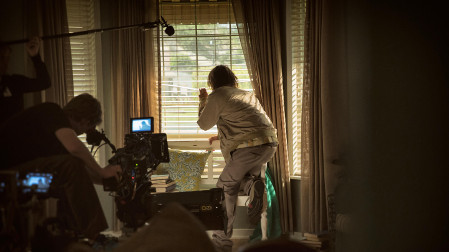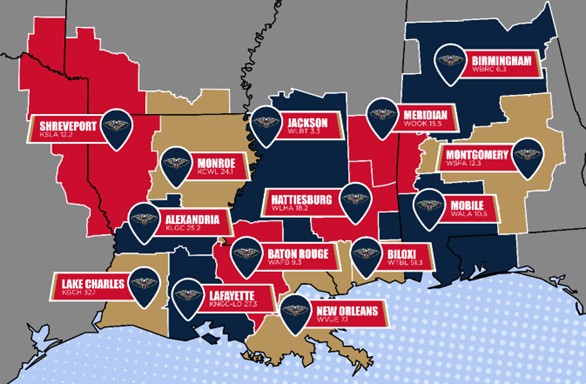Bringing the Cinematic Look to Television
LOS ANGELES—The venerable anamorphic format was developed for cinema by Twentieth Century-Fox in the 1950s. The studio wanted breathtaking, widescreen movies in order to compete with the newer medium of television. The resulting process, dubbed “CinemaScope,” used special lenses to optically squeeze a wider image onto a standard 35mm film frame, and audiences responded. The 2.40:1 aspect ratio brought grandeur to epic titles, but cinematographers began using the format’s unique magnification traits, field of view and focus fall-off as techniques for visual storytelling. Filmmakers found that the wide frame could hold two close-ups at once, and in the late 1960s the format began to be used by daring cinematographers like Gordon Willis, ASC and Robert Surtees, ASC for more intimate, character-driven stories. Audiences began to subconsciously associate the anamorphic image with feature-film image quality.
After a comparative lull in the 1980s and ‘90s, the format came back to feature filmmaking in a big way, driven partly by the need to add flavor to today’s digital imagery. And the trademark flares and other visual signatures of anamorphic are now making headway in television.
BACK TO THE ROOTS
Cinematographer Peter Menzies, Jr., ACS recently filmed the three episodes of the remake of “Roots,” the television miniseries that changed television in the mid-1970s. He and his collaborators wanted to shoot anamorphic, but felt that the full 2x squeeze would be unsuitable for television’s 16:9 frame.

Cinematographer Peter Menzies, Jr., ACS recently filmed the three episodes of the remake of “Roots,” on an ARRI ALEXA fitted with anamorphic lenses with a 1.3x squeeze.
“I remembered that Vantage Film offers anamorphic lenses with a 1.3x squeeze, and we tested those on the 4x3 ALEXA,” said Menzies. “I could use the entire chip area and all of the lens. I felt very comfortable doing so based on my experience with anamorphic film. Shooting full anamorphic would have been a waste—we’d end up with a smaller image area than if I’d shot spherical.
“Another big advantage is the format’s ability to give all the actors separation from the backgrounds,” he added. “It’s a performance piece, so that was important, and the producers enjoyed the look. These Hawk 1.3s gave us an incredible depth of field across people’s faces and maintained great texture in the background. The separation is extraordinary, but we still carried enough depth of field for the performances. The results are beautiful. It’s just a great look.”
The professional video industry's #1 source for news, trends and product and tech information. Sign up below.
Scott Williams uses the Hawk 1.3x anamorphics on “Girlfriends’ Guide to Divorce,” the single-camera comedy-drama that was Bravo’s first foray into scripted series television. He says the producers liked the fact that he could record on the ARRI ALEXA at near-4K resolution. The S-log image is unsqueezed inside the ARRI ALEXA cameras, so there’s no need for another step in post. Williams switched to the Hawk glass when he started season two.
“These 1.3x lenses really add a lot, but they never take over,” Williams said “The slighter squeeze means you get all the good stuff of anamorphic, but it’s a little less obvious. The backgrounds are like an impressionist painting, and the way they render faces, and the way the fall-off in focus travels from front to back—it all heightens it visually.”
The wide frame allows him more freedom in terms of blocking and coverage. “The reality in television production is that so many voices come into play between the time something is shot and when it’s finished,” he said. “It only takes one person saying, ‘Where’s the close-up here?’ So we end up having to shoot in a more predictable way sometimes. That leaves the lighting and technical choices. And that’s what is so exciting about these lenses for me—they’re a way of adding another whole layer without violating any of the mandates.”
In April 2016, Bravo renewed the show, and Williams is prepping to shoot three six-episode seasons of “Girlfriends’ Guide to Divorce” consecutively.
VINTAGE FEEL
Michael McDonough, ASC uses Hawk Vintage 74 lenses on “Fear the Walking Dead.” He had worked with other anamorphic glass on the pilot, but was looking for lenses that would deliver a vintage feel with modern housing and mechanics. Hawk Vintage 74 lenses, designed to deliver the idiosyncratic optical characteristics of older glass, fit the bill perfectly and allowed him to sometimes skip filtration, depending on the situation.

Michael McDonough, ASC uses Hawk Vintage 74 lenses on “Fear the Walking Dead.”
The pilot was shot in 2.40:1 aspect ratio, and the other episodes are framed in a 16:9 extraction. “It’s worth it, for everything that anamorphic gives you,” McDonough says. “The drop-off, the focus, the beautiful bokeh and flares—I look at the image and I feel it’s cinematic, even in 16:9. The Vintage 74s give me what I’m looking for in terms of softness and flares. They focus the intensity in the center of the frame and there’s that certain fall-off at the edges. I find anamorphic very much like human vision—there’s almost a sense of peripheral vision within the frame.”
Christopher Probst is one of the hottest shooters in the fields of music video and commercials. His clips with director Joseph Kahn for Taylor Swift swept the 2015 VMA Awards, and the “Blank Space” video has topped 1.2 billion YouTube views. In the commercial realm, his “Kobe vs. Messi: The Selfie Shootout” spot for Turkish Airlines was recently named ad of the decade by YouTube.
Probst believes in choosing the right tool for the job and capturing the look in-camera whenever possible. He often works with Hawk anamorphic lenses, including C- and V-Series, V-Lite and Vintage 74 anamorphic glass, depending on the look he envisions.
“The contrast and flare properties of certain lenses can really affect how a sharp, modern sensor renders a scene,” he says. “You can affect the image with lighting and exposure, but optics are becoming much more critical. With the Vintage 74s, Vantage is very smart to offer a series of lenses with reduced contrast, more veiling flare and more anamorphic flare.”
With the unique flavor of anamorphic becoming more common in television cinematography, no doubt lens makers will be quick to offer more lensing options.
“Innovation makes everyone step up their game, which is great for all directors of photography,” says Menzies.
